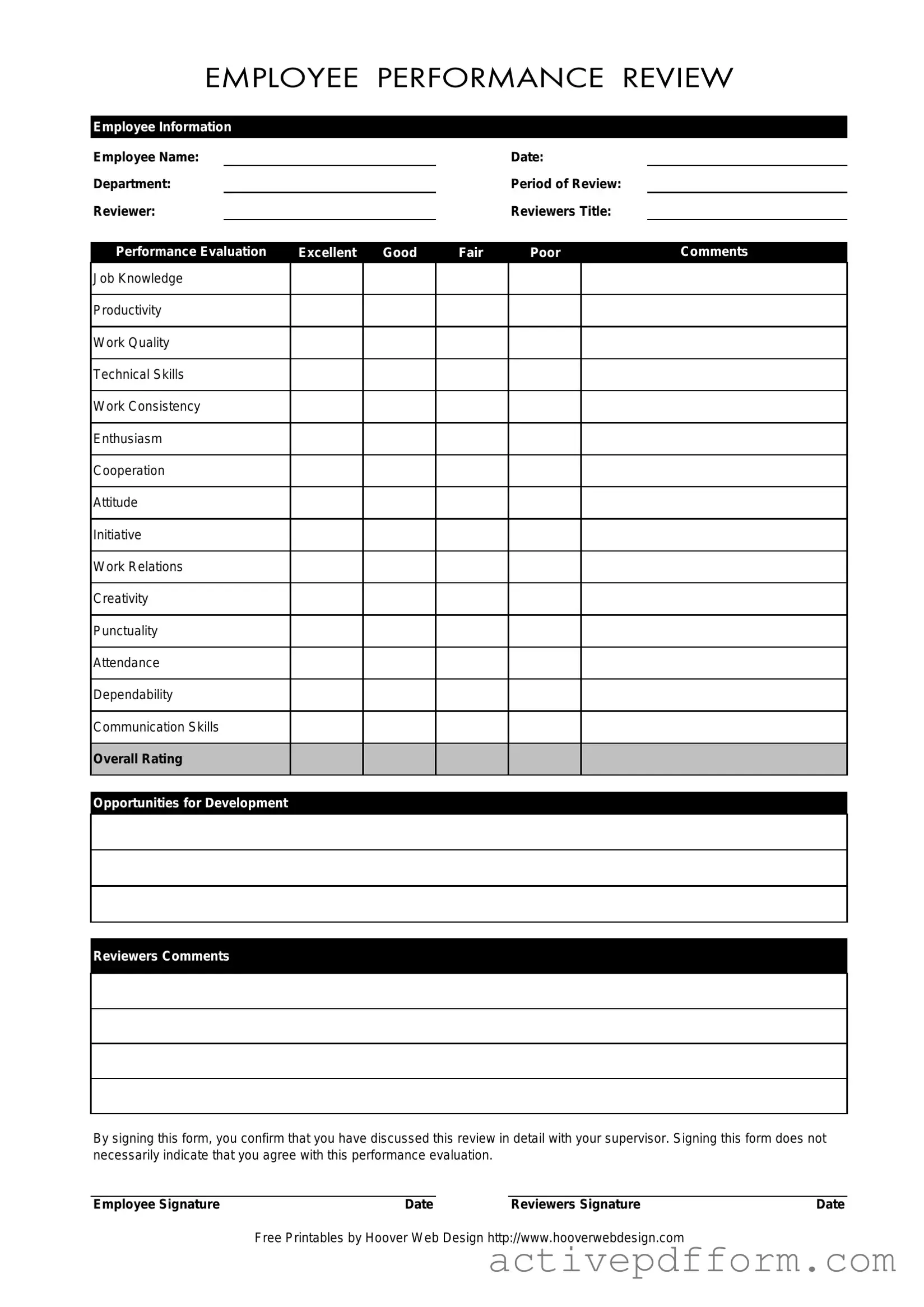What information is required on the Employee form?
The Employee form requires several key pieces of information to ensure a comprehensive evaluation. This includes the employee's name, the date of the review, the department they belong to, the period being reviewed, the name of the reviewer, and the reviewer's title. Additionally, the form includes sections for performance evaluation across various categories such as job knowledge, productivity, and communication skills, along with spaces for comments and overall ratings.
How is the performance evaluation structured on the form?
The performance evaluation is structured into multiple categories, each assessing different aspects of the employee's performance. Categories include job knowledge, work quality, and dependability, among others. Each category is rated as Excellent, Good, Fair, or Poor, allowing for a clear overview of strengths and areas for improvement. Reviewers are encouraged to provide comments to give context to the ratings, which can be invaluable for the employee’s development.
What does the signature on the Employee form signify?
By signing the Employee form, both the employee and the reviewer confirm that they have engaged in a thorough discussion regarding the performance evaluation. It is important to note that signing the form does not necessarily mean that the employee agrees with the evaluation. Instead, it serves as a record of the conversation that took place and acknowledges that the employee has had the opportunity to discuss their performance in detail.
What should an employee do if they disagree with their performance evaluation?
If an employee feels that their performance evaluation does not accurately reflect their work, it is important to address these concerns directly with their supervisor. Open communication can lead to a better understanding of the evaluation criteria and provide an opportunity for the employee to share their perspective. Additionally, employees may seek to document their thoughts in writing, which can be helpful for future discussions or reviews.
How can the Employee form contribute to an employee's development?
The Employee form plays a crucial role in identifying opportunities for development. By evaluating various performance metrics, employees can gain insight into their strengths and areas needing improvement. The comments section allows reviewers to provide constructive feedback, which can guide employees in setting personal and professional development goals. This feedback loop fosters a culture of growth and continuous improvement within the organization.

